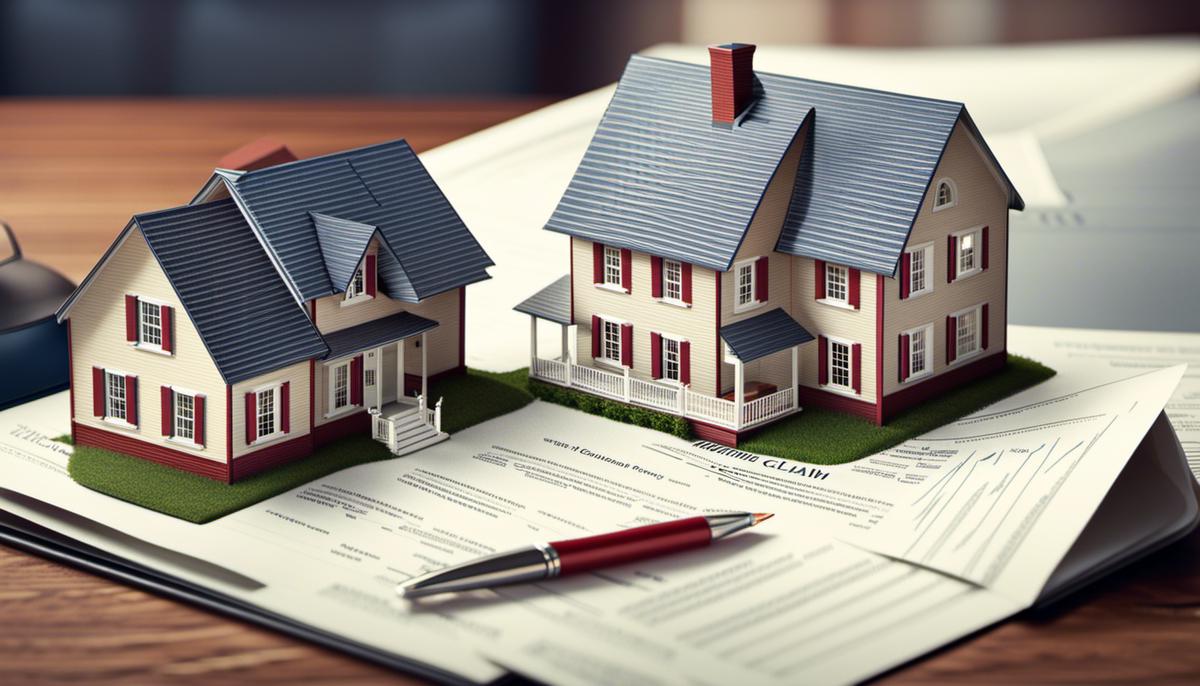Here’s what you need to know about home insurance for natural disasters.
Natural disasters, while unpredictable, have become an ever-present factor in our lives. They not only wreak havoc on our environment, but also have a significant impact on our homes. Therefore, being armed with a comprehensive insurance policy that considers a variety of natural elements is more pertinent than ever. This guide aims to elucidate the varying types of natural disaster coverages included in home insurance policies, factors to examine when picking the right insurance, and the process of filing a claim post a natural calamity. By understanding these details, homeowners can make informed decisions to safeguard their homes from potential hazards.
Types of Natural Disaster Coverage in Home Insurance
Common Natural Disaster Coverages in Home Insurance
Most standard homeowner’s insurance policies cover damages from a variety of nature-induced incidents. These typically include coverage for fires, windstorms, hail, lightning, and volcanic eruptions. Coverage for these events is usually comprehensive, meaning it will cover both damage to the structure of the home and the personal belongings within, up to the policy limit. Tornadoes are covered under the windstorm aspect of the policy, and while it is devastating, damage from lightning is also usually covered under standard policies.
Specialized Insurance for Severe Disasters
However, not all natural disasters are covered under the standard homeowner’s insurance policy. For example, flood insurance and earthquake insurance are not typically included and require separate policies. Flood insurance is essential if you live in a high-risk flood zone, but it can also be beneficial even in moderate-to-low risk areas since home insurance does not cover flood damage. Similarly, standard home insurance policies do not cover earthquake damage. As a result, if you live in an earthquake-prone area, such as California, you might consider purchasing additional earthquake insurance. These extra coverages ensure that homeowners are protected from significant financial losses after a catastrophic event.
It’s crucial to recognize that, depending on your geographic location, specific home insurance policies may cover damage incurred from hurricanes and windstorms, but often with an independent, elevated deductible. This deductible typically corresponds to a certain percentage of your home’s insured value rather than a predetermined fixed dollar sum. This highlights the importance of thorough policy assessment and potential need for supplementary coverage given the inherent risk levels associated with your residential location.

Choosing the Right Natural Disaster Insurance
Evaluating Your Risk: The Role of Geography and Climate
In the context of home insurance coverage for natural disasters, your home’s geographical position and prevailing local conditions significantly influence risk stratification. For instance, residencies situated in flood or wildfire-prone areas, or those frequently harrowed by hurricanes naturally harbor elevated risk levels. Consequently, insurance coverage requirements for these regions differ from those of homes situated in comparatively sheltered urban areas. As relayed in the previous section, residents in hurricane-affected coastal regions are well-advised to ensure their home insurance policies include windstorm coverage. Similarly, residences in areas vulnerable to flooding ideally should possess flood insurance, given that most standard insurance policies do not encompass flood damage.
House Structure: Built to Withstand the Elements
The construction and condition of your home also weigh heavily in the kind of natural disaster insurance you might need. Older homes may not have been built to withstand certain events and may therefore require more robust coverage. The same applies to properties made with certain materials that might be susceptible to specific types of damage. For instance, wooden homes are more at risk in fire-prone regions and homes without a solid foundation may suffer more in an earthquake. Knowing your home’s construction will allow you to tailor your insurance coverage to fit its specific needs.
Understanding Home Insurance Policies: No Room for Misunderstanding
Acquiring an in-depth understanding of your natural disaster home insurance policy is of paramount importance. This comprehension is crucial as certain types of catastrophic events may not fall under a standard homeowner’s policy but might necessitate additional, separate policies. These may include earthquakes, floods, and landslides. It’s imperative to have a candid conversation with your insurance provider regarding your needs and worries. Talk about crucial details such as the actual cash value in comparison to the replacement cost, which does not consider depreciation when calculating the cost to replace your damaged home. Through this knowledge, homeowners can choose the most comprehensive home insurance policy available to them.

Claim Process After a Natural Disaster
Damage Documentation Post-Disaster: An Essential Undertaking
Once the safety of your loved ones is ensured post-disaster, it becomes vital to thoroughly examine and document any damages sustained by your home. Initiate your documentation process by capturing photographs or video footage that encapsulates every physical dent made, both inside and outside your house. Remember not to throw away or repair any damaged areas prior to this, as this will serve as vital evidence when filing your insurance claim. It’s also wise to keep an accurate record of destroyed personal property. A comprehensive and meticulous documentation process will serve to streamline your insurance claim, ensuring a smooth and expedient process.
Filing a Home Insurance Claim After a Natural Disaster
To file a home insurance claim after a natural disaster, first, contact your insurance company as soon as you can. Provide them with your policy number and the best contact information for you. Your insurer will then assign an adjuster to manage your claim. The adjuster will assess the damage and verify if your policy covers the specific natural disaster that caused the damage. It’s essential to have your documentation ready to show the extent of the damage.
It’s advisable to keep a track of all your communication with the insurance company, including the names of the people you talk with. Also save receipts if you need to make any immediate repairs or need to buy items that were lost in the disaster for survival such as food, clothes, medicines, etc. Some policies will provide compensation for living expenses if your house is uninhabitable.
Hints for a Smooth Claims Process
For a smooth insurance claims process, understand your policy coverage, terms, and conditions before disaster strikes. Have an annual review with your insurance agent to update your coverage as needed. Keeping an up-to-date home inventory can also significantly streamline the claims process.
Timely communication is vital – always respond promptly to enquiries from your insurer and provide all requested information. Sometimes, if a widespread disaster happens, the local adjusters get overwhelmed. In such cases, do not hesitate to escalate your claim if you feel it’s not being addressed promptly or adequately. Understanding your rights as a policyholder can go a long way in settling your claim smoothly and effectively.

Ultimately, protecting your home with apt insurance coverage is a practical strategy to face unforeseen natural disasters. With a multitude of factors to consider, such as the location and construction of your home, the type of coverage you need, and understanding how to effectively navigate through the claim process following a disaster, every homeowner can ensure adequate protection for their biggest asset. By empowering yourself with this knowledge, you can not only safeguard your investment but also ensure peace of mind in the face of unpredictable natural disasters.




